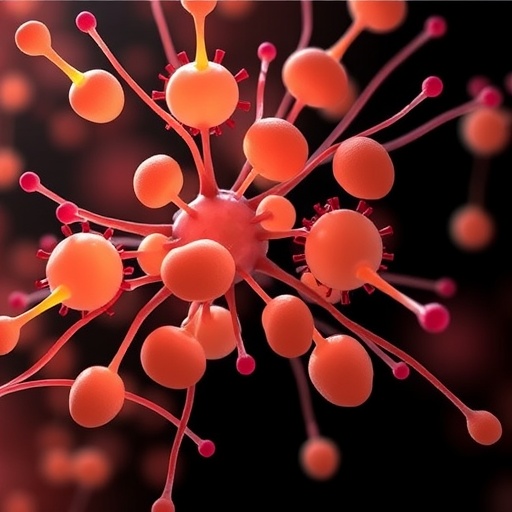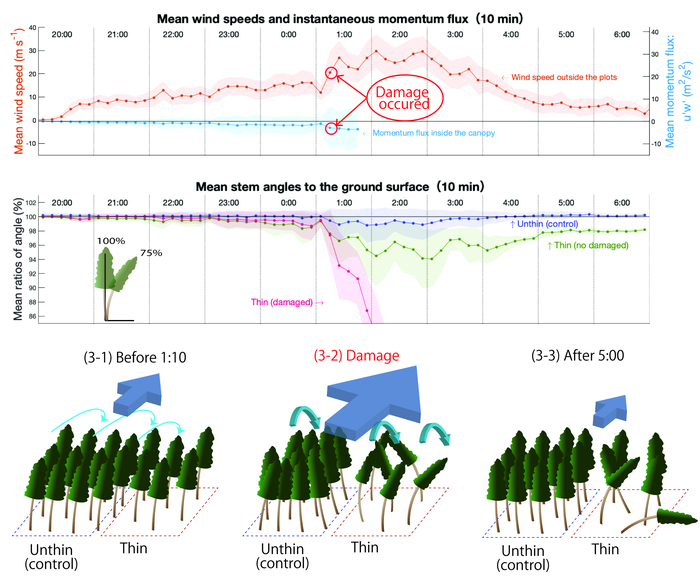In a groundbreaking study conducted at Ruhr University Bochum, scientists have unveiled a hitherto unknown cellular pathway instrumental in maintaining the integrity of peroxisomes, essential organelles responsible for critical metabolic functions. This new pathway, aptly named RADAR (Receptor Accumulation and Degradation in the Absence of Recycling), was molecularly characterized using baker’s yeast as a model organism. The discovery sheds unprecedented light on how cells recognize and dismantle defective import receptors in peroxisomes, thus safeguarding cellular functionality and health.
Peroxisomes are vital for processes such as lipid metabolism and reactive oxygen species detoxification. Like all cellular compartments, peroxisomes rely on import receptors to shuttle specific proteins through their membranes. However, the malfunction or accumulation of defective import receptors poses a serious threat, risking the overall peroxisomal operation and, by extension, cellular homeostasis. Prior to this study, the molecular framework ensuring the quality control of these receptors was elusive.
At the molecular level, RADAR depends fundamentally on the AAA-ATPase enzyme Cdc48p, which partners with cofactors Ufd1p and Npl4p to mediate recognition and extraction of faulty import receptors from the peroxisomal membrane. This concerted action facilitates the delivery of these defective proteins to the proteasome, the cellular machinery responsible for protein degradation. The employment of Cdc48p in this process parallels the well-studied ERAD system, where similarly critical quality control mechanisms operate within the endoplasmic reticulum.
What makes the discovery of the RADAR pathway particularly compelling is its strategic role in turning an essentially deleterious event — the presence of malfunctioning receptors — into an opportunity for cellular renewal. By selectively targeting and removing these compromised proteins, the cell forestalls potential disruptions that might impair peroxisomal function. This targeted degradation thereby sustains peroxisomal homeostasis and ensures that metabolic operations proceed unhampered.
This novel insight into peroxisomal quality control not only enriches our comprehension of cellular biology but also highlights the multifaceted functions of Cdc48p. Previously, this AAA-ATPase was primarily recognized for its involvement in other intracellular degradation pathways. The study indicates that Cdc48p’s remit extends into peroxisomal maintenance, orchestrating a finely tuned process of quality surveillance that dynamically responds to protein damage.
The research, spearheaded by Ismaila Francis Yusuf among others, demonstrated a meticulous experimental approach. Utilizing baker’s yeast as a model, they conducted a series of biochemical and genetic assays to validate the presence and functional relevance of RADAR. Through these methods, the team delineated how Cdc48p and its cofactors identify import receptors that fail to recycle appropriately, marking them for extraction and subsequent destruction by the proteasome.
Beyond the yeast model, the researchers posit that the RADAR pathway is evolutionarily conserved, which suggests parallel mechanisms operate in human cells. Given the integral role peroxisomes play in human metabolism—such as in the catabolism of very long-chain fatty acids and the regulation of reactive oxygen species—this discovery holds profound implications for biomedical research, particularly in understanding metabolic disorders linked to peroxisomal dysfunction.
In a broader biological context, this study aligns with growing evidence that cellular compartments employ specialized quality control systems to maintain functionality amid constant molecular turnover and environmental stress. The identification of RADAR as a bespoke pathway for peroxisomal receptor degradation underscores the complexity and adaptability of cellular quality surveillance networks.
From a translational perspective, elucidating the exact molecular interactions and regulatory signals involved in RADAR might pave the way for developing novel therapeutic strategies. Interventions aimed at enhancing or modulating such quality control mechanisms could potentially mitigate the impact of diseases characterized by protein misfolding or defective organelle maintenance.
Furthermore, the study invites fresh inquiries into the interplay between different AAA-ATPases within the cell. The complementary roles of Cdc48p and Msp1p, both implicated in the RADAR pathway, point to a sophisticated system where multiple molecular machines coordinate to oversee proteostasis in various organelles, including peroxisomes and mitochondria.
The discovery also challenges previous assumptions that peroxisomal protein quality control was limited or less complex compared to other organelles. Instead, it reveals that peroxisomes are equipped with intricate machinery capable of discerning and rectifying molecular errors, which is vital to their resilience and longevity within the cellular environment.
As science continues to unravel the nuances of intracellular quality control, the RADAR pathway stands out as a vital piece of the puzzle. The Ruhr University Bochum research team has thus set a new foundation for expanding our understanding of cellular homeostasis and the molecular guardianship that underpins it.
Altogether, this pioneering work broadens our molecular understanding of how cells protect themselves against the accumulation of flawed proteins and sustains the integrity of organelles essential for life. By dissecting the role of AAA-ATPase Cdc48p in this novel peroxisomal quality control mechanism, the study opens promising avenues for future research and potential therapeutic innovations targeting cellular proteostasis.
Subject of Research: Cells
Article Title: Role of AAA-ATPase Cdc48p in Peroxisomal Quality Control
News Publication Date: 28-Oct-2025
Web References: 10.1016/j.celrep.2025.116405
Image Credits: © RUB, Kramer
Keywords: Peroxisomes, Protein Quality Control, AAA-ATPase, Cdc48p, RADAR Pathway, Proteasome, Cellular Homeostasis, Baker’s Yeast, Peroxisomal Import Receptors, ERAD, Molecular Degradation, Metabolism
Tags: Cdc48p AAA-ATPase enzymecellular homeostasis mechanismslipid metabolism in yeastmetabolic function integrityperoxisomal import receptorsprotein degradation in cellsRADAR cellular pathwayreactive oxygen species detoxificationreceptor degradation mechanismRuhr University Bochum researchyeast model organism studyYeast peroxisomes quality control






